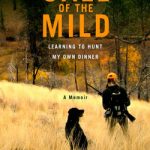Back to Middle-Earth
The Hobbit is not a particularly large book. It’s a friendly size, a book that a kid can read happily, without tripping over the endless pages of description — and walking — that fill The Fellowship of the Ring. The Hobbit: An Unexpected Journey is not the same size. The first film in Peter Jackson’s Hobbit trilogy pulls from Tolkien’s seemingly endless trove of Middle-Earth lore, filling out An Unexpected Journey until it’s more of a war story than the sprightly adventure on which it’s based. Continue reading


